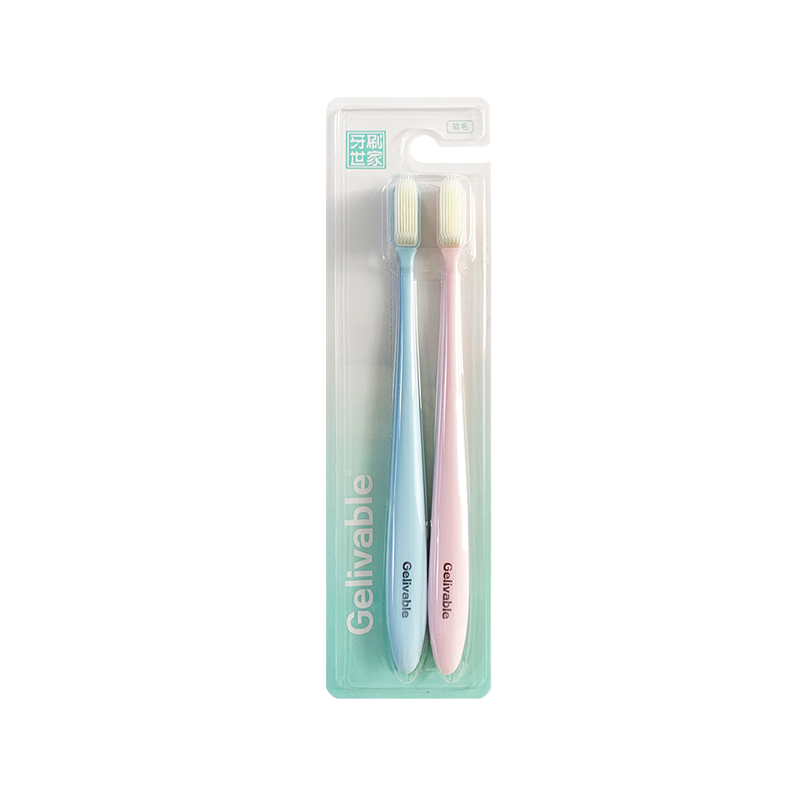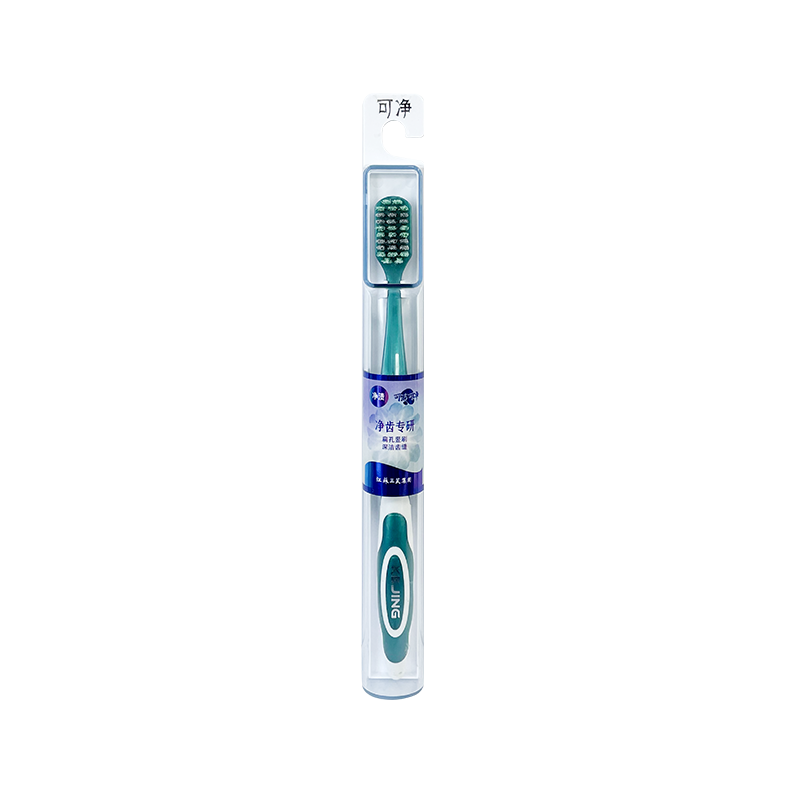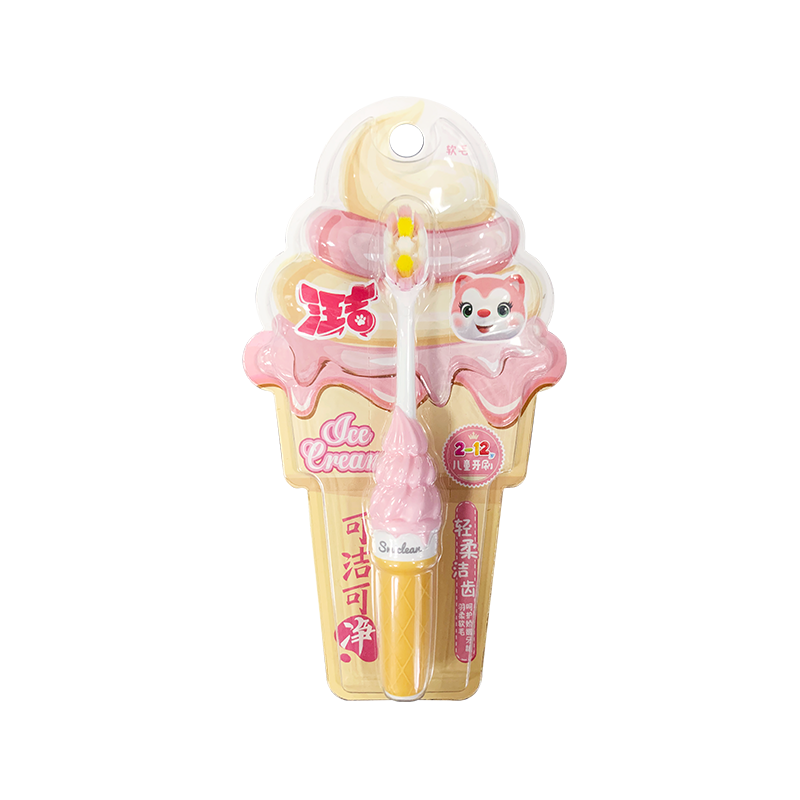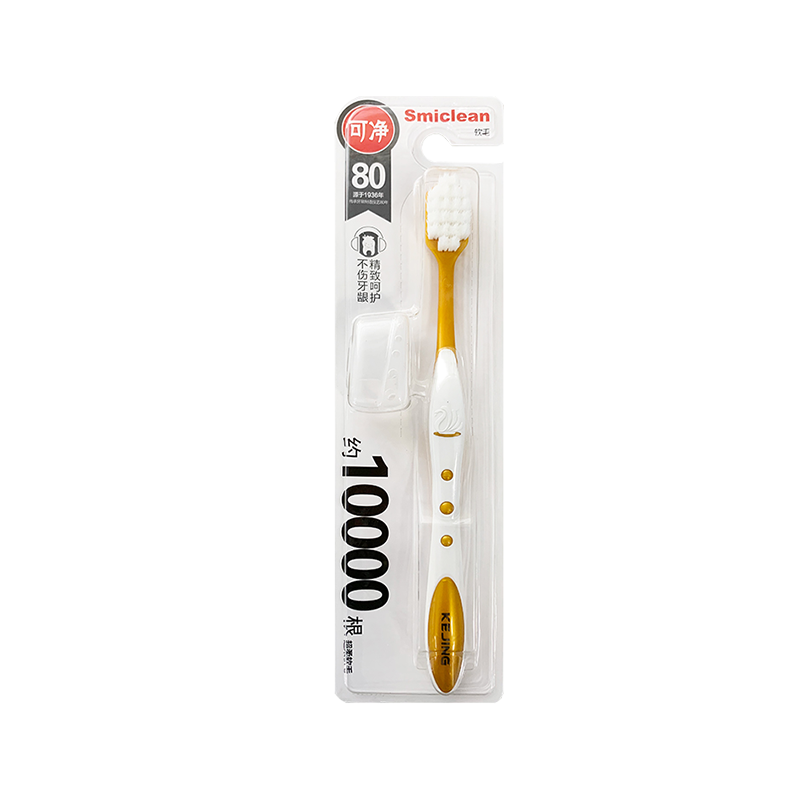Are Manual Toothbrushes Safe for Sensitive Teeth and Gums?
Sensitive teeth and gums are common problems for many people in daily oral care. Tooth sensitivity may manifest as short-term pain in response to hot or cold stimulation, sweet and sour food, while sensitive gums are prone to redness, swelling, bleeding and other phenomena. Choosing a suitable toothbrush is an important part of protecting oral health, especially the safety and use effect of manual toothbrushes, which have attracted much attention.
1. Causes and effects of sensitive teeth and gums
Sensitive teeth are mostly caused by exposed dentin, worn enamel or gum atrophy, which makes the dental nerve sensitive to external stimuli. Gum sensitivity is often caused by gingivitis, periodontal disease or improper brushing methods. In either case, the wrong brushing method or the use of an inappropriate toothbrush will aggravate the symptoms and cause discomfort.
2. Basic characteristics of manual toothbrushes
Manual toothbrushes are the most common type of toothbrush, which are popular because of their affordable price and easy to carry. Manual toothbrushes on the market are diverse in terms of bristle hardness, brush head size, handle design, etc., suitable for the needs of different groups of people. For sensitive teeth and gums, choosing a suitable manual toothbrush is particularly important.
3. Are manual toothbrushes suitable for sensitive teeth and gums?
1. Soft-bristled manual toothbrushes are the ideal choice
For sensitive teeth and gums, soft-bristled manual toothbrushes are the first choice. Soft-bristled brushes are fine and soft, which can effectively remove dental plaque, while reducing mechanical stimulation to gums and enamel, and reducing the risk of bleeding and pain. Compared with hard-bristled brushes, soft-bristled brushes are gentler to use and reduce gum trauma when brushing.
2. Bristle design affects comfort
Many manual toothbrushes use a multi-layered, irregularly arranged bristle design, which can better fit the teeth and gum line, and clean more comprehensively without irritation. For sensitive people, you can choose a toothbrush with rounded bristle tips to reduce the damage of the bristles to the oral soft tissues.
3. Manual toothbrushes are flexible to operate and easy to control the strength
The advantage of manual toothbrushes is that users can adjust the brushing strength and angle according to their own feelings. Patients with sensitive teeth and gums are usually advised to brush gently to avoid excessive force to prevent gum recession and enamel wear. Compared with electric toothbrushes, manual toothbrushes are easier to control and are suitable for sensitive users.
4. Precautions when using manual toothbrushes
1. Brushing should be gentle
Whether it is a manual or electric toothbrush, excessive brushing will damage the gums and enamel. It is recommended that patients with sensitive teeth and gums use a gentle horizontal or oblique 45-degree brushing method, and each brushing time should be no less than 2 minutes to ensure cleaning while protecting oral tissues.
2. Replace toothbrushes regularly
Bristle wear will reduce the cleaning effect and even increase the risk of gum damage. It is generally recommended to replace toothbrushes every 3 months. Sensitive people should pay more attention to the condition of the bristles and replace them in time.
3. Use with appropriate toothpaste
For sensitive teeth, anti-sensitive toothpaste containing potassium nitrate, strontium chloride and other ingredients can reduce dentin sensitivity and enhance protective effects.
4. Avoid incorrect brushing habits
For example, improper brushing methods such as excessive force and horizontal brushing will aggravate sensitive symptoms. Correct brushing posture and gentle force are the key to protecting teeth.
5. Comparison between manual toothbrushes and electric toothbrushes
Electric toothbrushes have high cleaning efficiency due to high-frequency vibration and rotation, but for sensitive teeth and gums, some users will feel discomfort caused by vibration. Manual toothbrushes are the first choice for sensitive people because of their controllable force and gentle feeling.
Of course, if you choose an electric toothbrush, it is recommended to choose a product with a sensitive mode and a soft-bristled brush head.
6. Summary and suggestions
Patients with sensitive teeth and gums should give priority to soft-bristled manual toothbrushes, which are safer;
Maintain a gentle brushing habit and avoid excessive force;
Replace toothbrushes regularly to maintain the integrity of the bristles;
Use professional anti-sensitive toothpaste to improve comfort and protection;
If conditions permit, consult a dentist for personalized care advice.
Manual toothbrushes are a safe choice for people with sensitive teeth and gums due to their flexibility and gentleness. As long as you choose the right soft-bristled toothbrush and master the scientific brushing method, you can fully meet your oral cleaning needs and reduce sensitive symptoms. Paying attention to oral health starts with choosing the right toothbrush, making every brushing a wonderful experience of caring for your teeth.

 English
English русский
русский Español
Español




